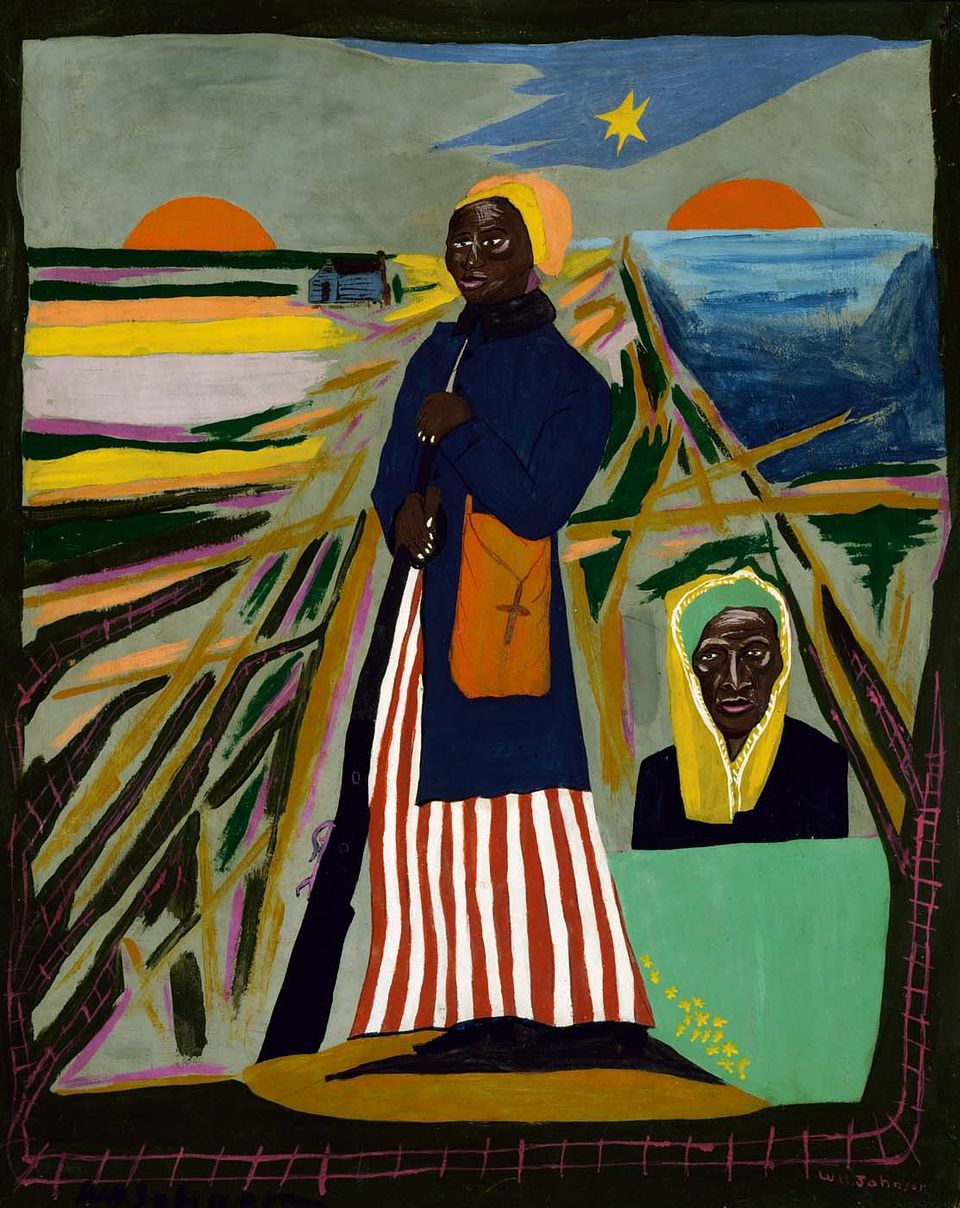Artwork Details
- Title
- Marcus Garvey
- Artist
- Date
- ca. 1945
- Location
- Not on view
- Dimensions
- 35 3⁄4 x 28 7⁄8 in. (90.8 x 73.4 cm.)
- Credit Line
- Gift of the Harmon Foundation
- Mediums
- Mediums Description
- oil on paperboard
- Classifications
- Subjects
- Occupation — other — reformer
- Object — other — flag
- Portrait male — Garvey, Marcus
- History — United States — Black History
- Figure group
- Architecture — boat
- Object Number
- 1967.59.648
Artwork Description
In 1914, Jamaica-born Marcus Garvey (1887--1940) read Booker T. Washington's autobiography Up from Slavery. It raised troubling questions for him. "Where is the Black man's government?" he wondered. "Where is his country?" The book prompted Garvey to establish the Universal Negro Improvement Association (UNIA). In Harlem in 1916, his message of economic and cultural independence and unity struck a chord among people of African heritage. By 1920 UNIA had tens of thousands of members throughout the United States and abroad. UNIA-affiliated restaurants, shops, and store-front factories flourished in Harlem, and Garvey established the Black Star shipping line as part of his Back to Africa philosophy.
Johnson showed Garvey as an orator, his wife seated at his side. Ships bearing Black Star Line flags float above an image of UNIA's headquarters. Below, a barred window, handcuffed wrists, and the words "deported U.S.A." signal the end of Garvey's time in New York. Charged with mail fraud in connection with the sale of Black Star stock and the object of a politically motivated investigation by the young J. Edgar Hoover, Garvey was deported to Jamaica in 1927.














